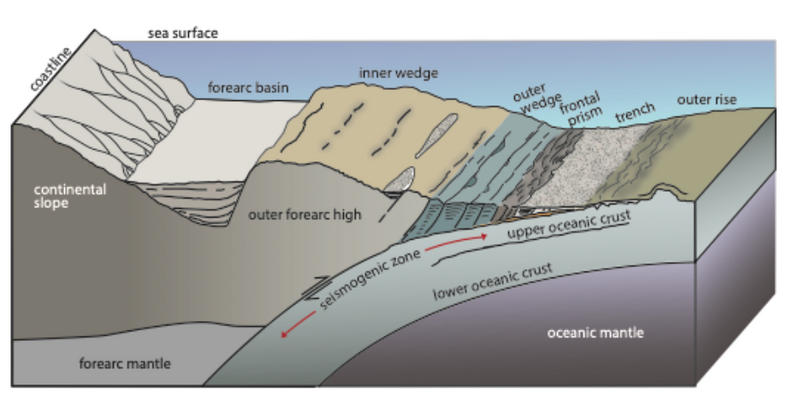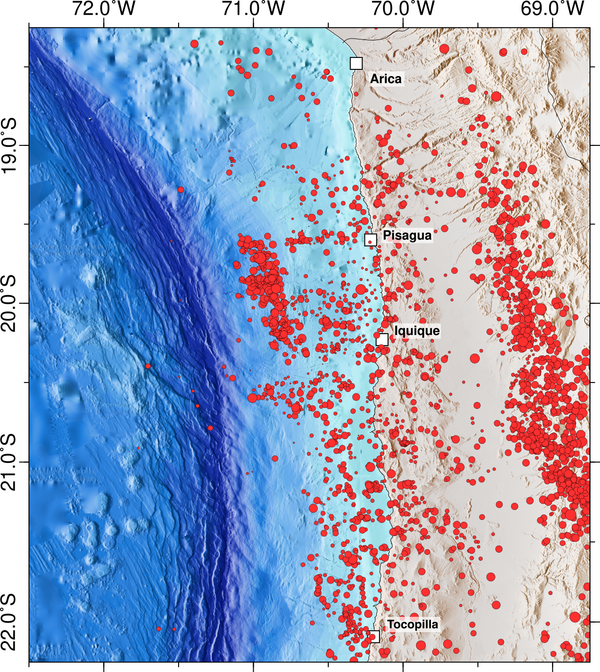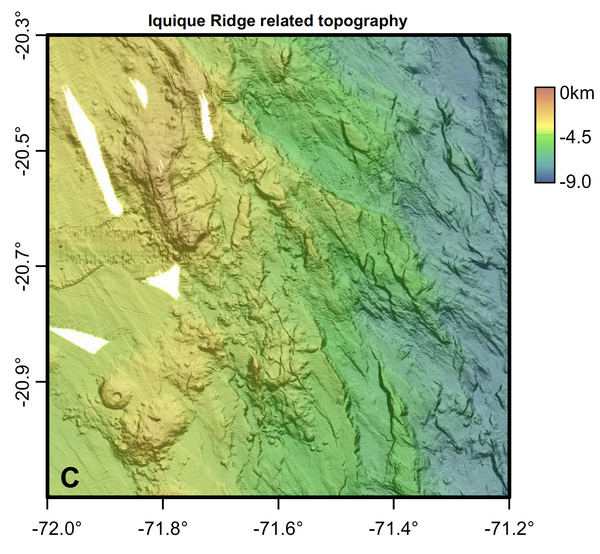Prof. Dr. Heidrun Kopp
Phone: +49 431-600-2334
hkopp(at)geomar.de
Dr. Ingo Grevemeyer
Phone: +49 431-600-2336
igrevemeyer(at)geomar.de
In the 1960, the concept of plate tectonic revolutionised geosciences, as it provided an explanation for numerous, observed phenomena of the earth's surface and of its interior. This new concept of plate tectonics not only explained the occurrence of earthquakes, vulcanism, deep mantel flow and destruction of oceanic lithosphere, but arranges the individual observations to see the bigger picture. Plate tectonic processes concentrate along plate boundaries: at the lithosphere's point of origin, the mid oceanic ridge systems and at the lithosphere's point of destruction, the subduction zones. All these plate tectonic processes have social-economic repercussions, which in return have a direct impact on our society. Earthquakes, tsunamis, vulcanism and landslides impose a severe threat to local settlements. On the contrary, natural mineral deposits, whose formation is linked to plate tectonic processes, can be of economic interest.
Thus, a better understanding of these phenomena is essential, to evaluate and lessen georisks, but also to use georeservoirs effectively and safely. Our research focuses on processes at active plate boundaries, as these are directly linked to phenomena as natural hazards (natural hazards) or fluid transport (fluid transport). Therefore, we undertake a holistic approach with the help of colleagues from other disciplinaries and countries.

Subduction zones mark active plate boundaries, where oceanic lithosphere is pushed under another lithospheric plate (Fig. 1). These regions not only accommodate the strongest earthquakes observed on earth, but are also commonly aligned along coasts, and therefore often endanger settlements. The strong earthquakes, associated with subduction zones, have a high magnitude and a correspondingly high destructive potential. However, these earthquakes do not occur randomly but underlay the so called seismic cycle, which describes how tension is relieved and built up at subduction zones. During a strong earthquake, the tension between the two lithospheric plates, which accumulates due to the converging motion of the plates, is released and has to be build up again before another large earthquake can occur.
We investigate these processes at subduction zones worldwide. As we have done in northern Chile, where the Nazca plate subducts under South America and triggers large earthquakes along the plate boundary under the seafloor. We use seismic imaging methods to decipher the subsurface structure of the plate boundary, seafloor mapping to identify geological structures on the seabed (Fig. 3) and seismological methods to understand the earthquake distribution (Fig. 2). Our methods are constantly worked on and refined, for instance marine Geodesy has just recently been added to our portfolio to measure the plate tectonic related build-up of tension in situ.



